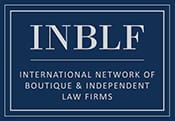Food safety powers you might have forgotten about
June, 2013
Eric F. Greenberg | Attorney-at-Law
Like a public relations rep for a forgotten celebrity, I sometimes find myself reminding people about the Reportable Food Registry. That new Food Safety Modernization Act may be the latest shiny new toy in town, grabbing all the press, but the RFR continues chugging along, burdening the food industry with important and strict reporting obligations. The RFR was put in place starting in September 2009, a little over a year before the new food safety law was passed, and plays an important role preventing food safety problems from causing damage, and that includes problems caused by packaging or labeling mishaps.
Food companies or government officials who discover food in commerce that has a reasonable probability of causing serious adverse health consequences or death have 24 hours in which to report to the Food and Drug Administration through a special RFR Internet portal: http://1.usa.gov/L1lUb4.
These companies, referred to as “responsible parties,” commit a violation of law if they fail to make the required report. Both animal and human foods are covered by the requirement, but dietary supplements and infant formula are not (they each have separate reporting obligations), and meat and poultry are not.
FDA reported recently on the data from the second full year of the RFR’s operations.
Because the RFR places reporting obligations on essentially everyone who discovers a potentially dangerous food, it’s common for an initial report to be made by one company and many subsequent reports to follow from their customer companies or suppliers.
And in fact, FDA says, the total number of reports was down in year 2 over year 1, due in large part to just three primary reports in year 1 that spawned more than 1,200 subsequent reports: an instance of undeclared sulfites in prepared side dishes; Listeria monocytogenes in cheese spreads; and Salmonella in a widely used hydrolyzed vegetable protein.
So although the year 2 total of submissions is 1,153, down dramatically from year one’s 2,600, FDA attributes the big drop to those big three. The numbers of primary reports was about the same year to year, 229 in year 1 and 225 in year 2.
What hazards are inspiring the RFR reports? Over a third are Salmonella (38.2%), another third are undeclared allergens on labels (33.3%), next biggest is Listeria monocytogenes (17.8%). Other lesser causes included sulfites undeclared on labels, e. coli, foreign objects, and uneviscerated fish. The food products involved in the reports were quite varied, from produce, to animal foods, to baked goods, seafood, spices and seasonings, dairy products and others.
The FSMA is regularly described as designed to prevent food outbreaks before they occur, and most but not all of its provisions target that goal directly, by, for example, requiring HACCP-like risk control programs and foreign supplier certifications. The RFR, by contrast, is designed to limit the damage that problematic foods can cause. Because it requires essentially immediate reports about potentially dangerous foods, the RFR provides “early warning about potential public-health risks” and allows industry and government to “remove hazards from the marketplace” more quickly, says Michael R. Taylor, FDA Deputy Commissioner for Foods, in the new report. And what it requires is immediate and detailed reporting by food companies of sensitive information. The RFR is a very real and present burden that often inspires companies to take remedial actions, whereas some of the FSMA obligations might not apply to every food company and in any event are not yet fully phased in.
The FSMA actually tweaked the RFR by requiring FDA to make rules for companies to communicate with consumers about reportable foods, and to prepare easily disseminated information for grocery stores to provide to consumers. FDA says it’s working on those rules.
Regulators like multiple arrows in their quivers, and food safety is an important priority. But still, it’s useful to ask whether the RFR’s requirements and FDA’s enforcement powers end up being a little redundant. The RFR is essentially a loud and widespread alarm about a potentially harmful food, and it puts pressure on companies to recall or take other remedial actions when the food they package or handle is associated with such a report. So, despite all the attention being paid to FDA’s new powers under the FSMA to order food recalls, detain foods, and suspend facility registrations, the RFR program might have been achieving many of the same goals that are behind provisions of the FSMA. We’ll have to see future annual reports about the program to identify any differing patterns before and after the implementation of FSMA. Until then, someone get the RFR a new PR firm. PW
Eric Greenberg can be reached at [email protected], and visit his firm’s Web site at www.ericfgreenbergpc.com.
This article is informational only and is not intended as, and should not be considered to be, legal advice.
Be sure to check for any updated information about the topics discussed in this article.


